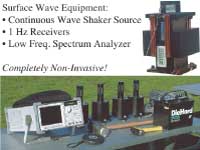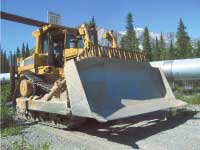
Spectral Analysis of Surface Waves: Method and Results
Click on image to view larger version (42KB, 31KB)On the Denali fault, ~15% of the surface expression of the 2002 right-lateral oblique rupture was up to the north at the Delta River. We sought to estimate the depth of bedrock on either side of the fault and total relative uplift using Spectral Analysis of Surface Waves. On the Delta River the vertical uplift was between 60-80cm up to the north during the 2002 event.
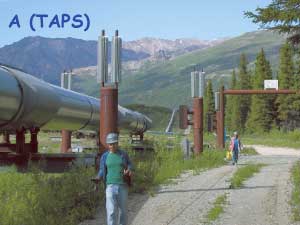 |
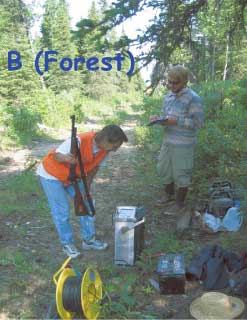 |
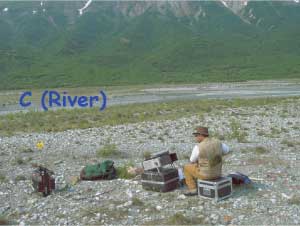 |
 |
| Field Operations: We deployed seismometers at sides on the north and south side of the fault at 3 transect lines. Photographs (A) cable and seismometer deployment at the TAPS; (B) recording waveforms on a spectral analyzer along the forest road...bear country; (C) SASW testing on the Delta River; (D) deployment on the west side of the Delta River required helicopter carries of equipment. | |
|
Simplified interpretation of SASW results: Delta River |
Tectonic uplift, sediment ponding, and their effects on liquefaction potential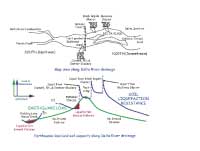 |
| Click on image to view larger version (19KB, 35KB) | |
| Producing a shear wave velocity profile from the surface wave data involves (1) field collection of cross-power spectra and frequency response data; (2) computing a dispersion curve for Rayleigh waves; and (3) inverting a theoretical shear wave velocity structure whose dispersion curve shape best fits (Minimum RMS deviation) the field dispersion curve. Step (1) involves placement of seismometers at distance from a surface wave source (CAT D9N). From the cross-power spectra and seismometer array geometry we can compute the dispersion curve (2) in the field. We use three independent inversion algorithms to estimate the body wave structure of the ground. The inversion process and its results are non-unique. | |
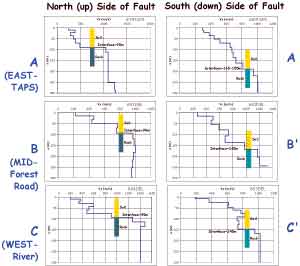 (View at 50KB) (View at 50KB) |
SASW Results: Holocene sediment fill on the north side of the fault is to ~90m in all three transects. On the south side, the sediment depth varies between 145-185 meters, and a higher velocity (older) sediment unit is present and possibly protected by the fault scarp. We estimate that there is between 55-95 meters of relative vertical offset, up to the north, since the entire valley was glacially scoured to bedrock. Fault offset ponds sediment on the south side of the fault. Accretion in this quieter depositional environment results in higher liquefaction potential (Kayen et al. Earthquake Spectra 20(3) 639-667). |
Poster Home Page | Abstract | Study Area | SASW Method & Results | LIDAR & Radar | Summary | About These Web Pages
Geotech Home Page

